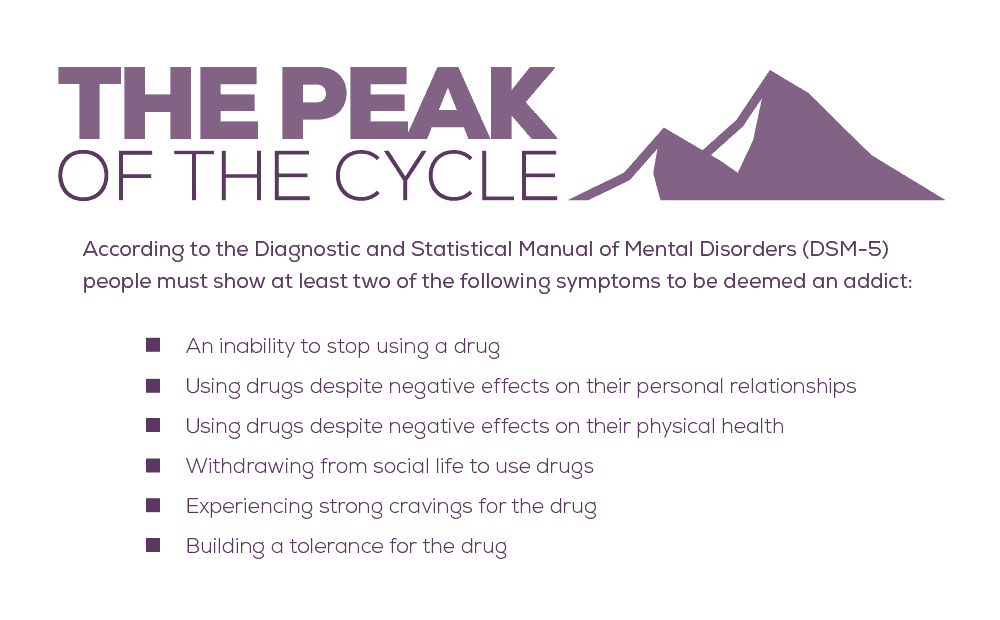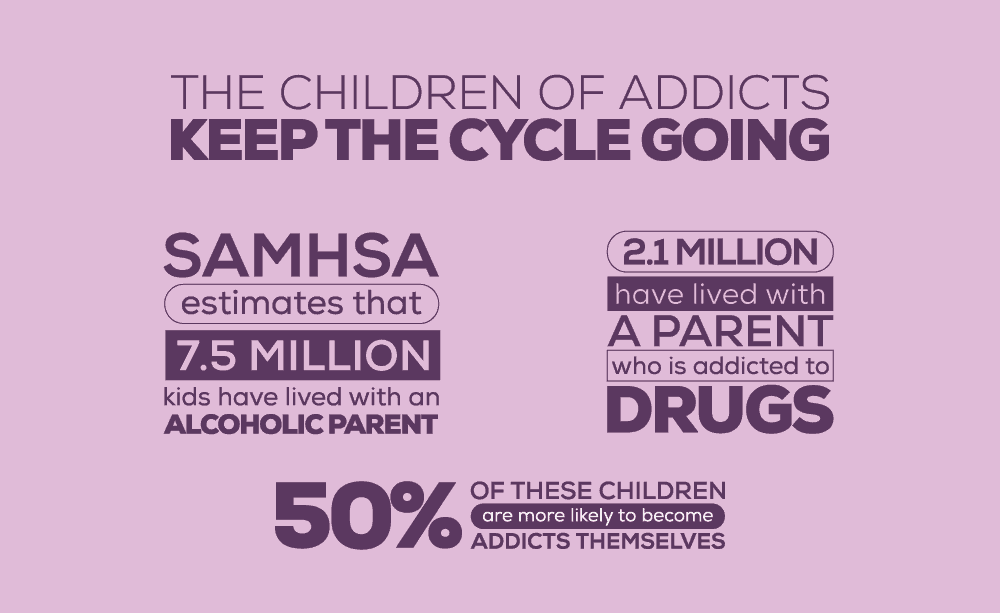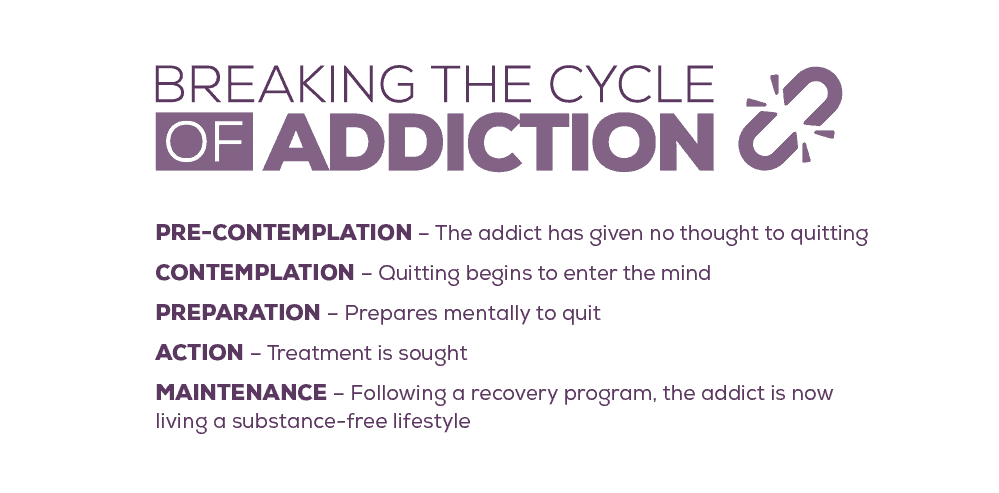More than 22 million Americans are trapped in a cycle of drug and alcohol abuse. In order to get them treatment, we need to recognize how that cycle works. No one wants to be a drug addict. Sure, they might enjoy drinking alcohol or getting high. But the constant need to keep using is a heavy burden on the addicted individual. It affects their physical, mental, and social health. In fact, it plagues them in every aspect, threatening their safety and life itself. For that reason, addiction treatment programs are essential for turning the situation around. 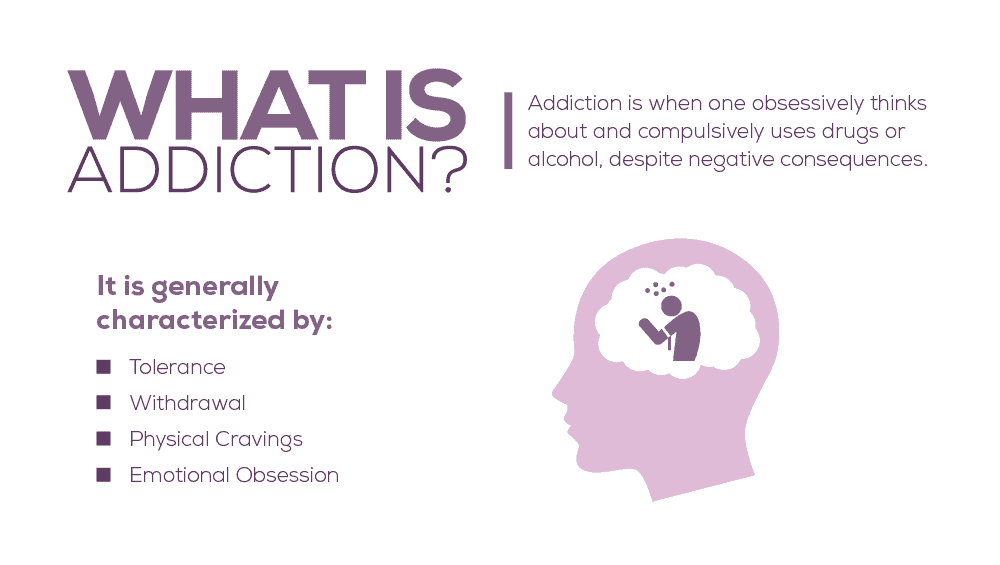 Non-users don’t always get it. Many people believe that the addict should just quit if they want to be clean. Some people think that drug addiction and alcoholism are just character flaws. They think that if the addict could simply build some character, they’d be able to kick their habit. That’s not the case. As the National Institute on Drug Abuse points out, drug addiction and alcoholism are diseases of the brain. And like other chronic illnesses, they can be very difficult to overcome. Most of us know that America’s addiction problem is serious. NIDA data shows us that more than 22 million Americans suffer from drug addiction or alcoholism. Even more alarming, only 2.5 million have received professional treatment. It’s clear that this needs to change.
Non-users don’t always get it. Many people believe that the addict should just quit if they want to be clean. Some people think that drug addiction and alcoholism are just character flaws. They think that if the addict could simply build some character, they’d be able to kick their habit. That’s not the case. As the National Institute on Drug Abuse points out, drug addiction and alcoholism are diseases of the brain. And like other chronic illnesses, they can be very difficult to overcome. Most of us know that America’s addiction problem is serious. NIDA data shows us that more than 22 million Americans suffer from drug addiction or alcoholism. Even more alarming, only 2.5 million have received professional treatment. It’s clear that this needs to change.
Are you worried that you could be addicted to drugs or alcohol? Take one of our free online quizzes to find out if you need treatment.
“Our Residential Alcohol Rehab Program accepts various health insurance plans. Get clean, avoid relapse and learn to live a sober lifestyle.”
What is the Addiction Cycle?
The cycle of addiction is defined by six phases: early use, abuse, tolerance, dependence, addiction, and relapse. Some of these phases overlap. In some cases, they may be hard to distinguish from one another. The timeline of the cycle looks different for every addict. Some go through the cycle rapidly. For others, it takes years. But if any addict can recognize the cycle while they’re in it, they can reach out to get the help they need.
Early Drug Use
A lot of people use drugs, which are common in our culture. You can buy beer in most grocery stores, and with legal marijuana, it’s easy to get that, too. However, not everyone becomes addicted. For addicts, the first phase of addiction often starts with occasional use, like a few bumps of cocaine now and then. Scientists aren’t sure why some people become addicts, but there are suspected risk factors. According to Mayo Clinic, these include:
Environment
Being around addicts or lacking a supportive family can increase addiction risk. Accountability reduces substance abuse likelihood.
Drug Use While Young
Early drug use can alter brain chemistry, leading to early addiction.
Drug Potency
Stronger drugs, like heroin, are more addictive than milder substances.
Mental Health
Disorders such as anxiety, depression, PTSD, and ADHD increase addiction risks. Untreated mental illness often leads to drug and alcohol use for self-medication.
From Drug Use to Drug Abuse
When the addict’s habit becomes a threat to their life, they are considered to be drug abusers. Of course, “threats” are relative to the circumstances. Using heroin one time is dangerous, but taking medications is not if the user was prescribed. To figure out if someone is abusing drugs, look for these signs:
- They take more and more over time
- They put a lot of effort into obtaining the drug
- They get angry or anxious without the drug in their system
- They risk their safety to use it (i.e. drunk driving, etc.)
- The do something illegal to get high or drunk (i.e. stealing, etc.)
- Their health is affected by their habit (i.e. lack of sleep, getting sick, etc.)
Drug abuse is most recognizable when someone misuses prescription drugs. Someone who takes painkillers, for example, progresses from responsible use to misuse when they start taking too much, using after their prescription is up, and putting their safety at risk. When someone behaves in that way, it’s a sign that they’re getting caught up in the addiction cycle.
Building a Tolerance
Drug tolerance happens when someone needs more of a substance to feel its effects. For example, if someone used to get drunk on two beers but now needs eight, it’s because they’ve developed a tolerance. We get high from drugs because we don’t use them all the time. Every drug impacts our body and brain differently. However, repeated use makes our bodies adapt to the drug’s presence. Our cells change to accommodate the chemical, meaning more of the drug is needed to achieve the same effect. Developing a tolerance is a warning sign, and it’s advisable to seek help.
Chemical Dependency
If an addicted individual is powerless over drug use in the early stages of their habit, they become entirely powerless once they’re chemically dependent. At this point, they’ve essentially rewired their brain to need the drug. Research shows that by the time a user becomes chemically dependent, their brain has been programmed to believe that the drug is necessary to keep them alive. Unfortunately, it’s nearly impossible to reduce cravings without detox.
“Get your loved one the help they need. Our substance use disorder program accepts many health insurance plans, this is our residential program.”
Addiction: The Peak of the Cycle
It can be difficult to distinguish between drug abuse, chemical dependency and a full-blown addiction. By the time someone has reached this phase in the addiction cycle, it’s likely that their drug or alcohol habit has already affected their life. However, the DSM-5 provides us the official definition of addiction disorder. As the leading source in the mental health industry, we use the DSM’s definition in our work. They say that people must show at least two of the following symptoms to be deemed an addict:
- An inability to stop using a drug
- Frequently using more of the drug than they’d planned to use
- Using drugs despite negative effects on their personal relationships
- Using drugs despite negative effects on their physical health
- Spending excessive time and effort using the drug or recovering from its effects
- Withdrawing from social life to use drugs
- Becoming unable to meet obligations due to drug use
- Building a tolerance for the drug
- Finding themselves unable to stop using it
When someone displays a few of these characteristics, it’s crucial that they get help. If the addict is taking powerful drugs like cocaine or heroin, they could be at risk of overdosing.
We’re Still Addicts After We Get Clean
It’s important to note that addiction doesn’t end after we stop using. The addiction phase is one that carries on into our sobriety. The members of AA are known to say, “Once an addict, always an addict.” They don’t mean this in a negative way. They use it to remind themselves that the fight against addiction is an ongoing one. In order to stay clean, we need to remind ourselves that we’re just one dose away from losing our sobriety.
Relapse: When the Cycle Comes Full-Circle
Relapse is when an addict returns to using after being sober for a while. Between 40% and 60% of all recovered addicts relapse at some point. While some addicted individual do get clean after several relapses, most of them get caught back up in the addiction cycle.
Relapses occur much like the initial addiction. They start with the sober person using a small amount of their drug of choice. They often think that, because they’ve been clean, they are strong enough to use without becoming addicted. However, this is likely to lead them back into chemical dependency. It’s important not to view relapses as a failure. Just because someone relapses on their drug of choice doesn’t mean that their life is over. After returning to drugs, it’s important for the addict to get help and turn their focus back toward sobriety. With proper treatment, they’ll have a better chance of avoiding a relapse in the future.
The Children of Addicts Keep the Cycle Going
Passing on the habit isn’t officially part of the addiction cycle, but it doesn’t always stop with the addict. It’s often passed to their children. The National Institute on Alcohol Abuse and Alcoholism notes that addicts’ children are more likely to develop addictions. Children of alcoholics (COAs) are at higher risk for behavioral and emotional issues, including addiction to alcohol and other drugs.
The NCADD states that these children are 50% more likely to become addicts. This is alarming, given the number of children living with addicted parents. The Substance Abuse and Mental Health Services Administration estimates that about one in eight children lives with at least one addicted parent.
Worried that your parent has a substance abuse disorder? Take our free online quiz to get a clear answer.
Resources for the Children of Addicts
It can be tough for someone to recognize that their loved one has a problem. But the faster they do so, the quicker they can get help. The NIAAA outlines some questions that we can ask ourselves to determine whether a family member is addicted to. They refer to these questions as the Family CAGE Screening Test. The CAGE Test is named for the acronym that appears in the list of questions.
- Does your parent need to cut down on their drinking or drug use?
- Do they ever get annoyed if someone talks about their habit?
- Do they ever feel guilty about their drug use or drinking?
- Do they ever use drugs or drink early in their day?
If someone suspects that their loved one may have a substance abuse issue, they should reach out for help as quickly as possible. Al-Anon is an organization of people who’ve been affected by the addiction of a loved one. This organization is free. They meet regularly to discuss the struggle of loving an addict. You can find a list of Al-Anon meetings in Seattle, Spokane and other Washington cities on our site. ”
It’s Time for Us to Break the Addiction Cycle
Being caught in the cycle of addiction is painful and overwhelming. It’s not how any of us imagine our lives. If you’re currently struggling with drug addiction or alcoholism, there’s help for you. There are people who want to lend a hand as you work toward getting sober. Call us today at 888.450.2153 or use our online contact form. We can discuss your habit and point you toward treatment options. 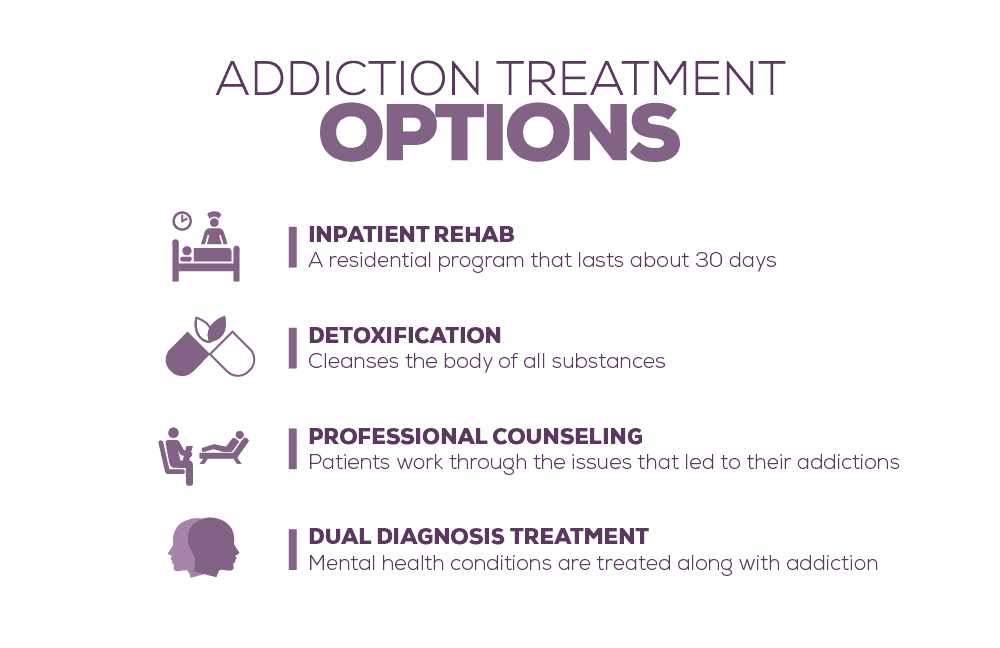
What Did you Think About This Blog?
Give it a Rating!


